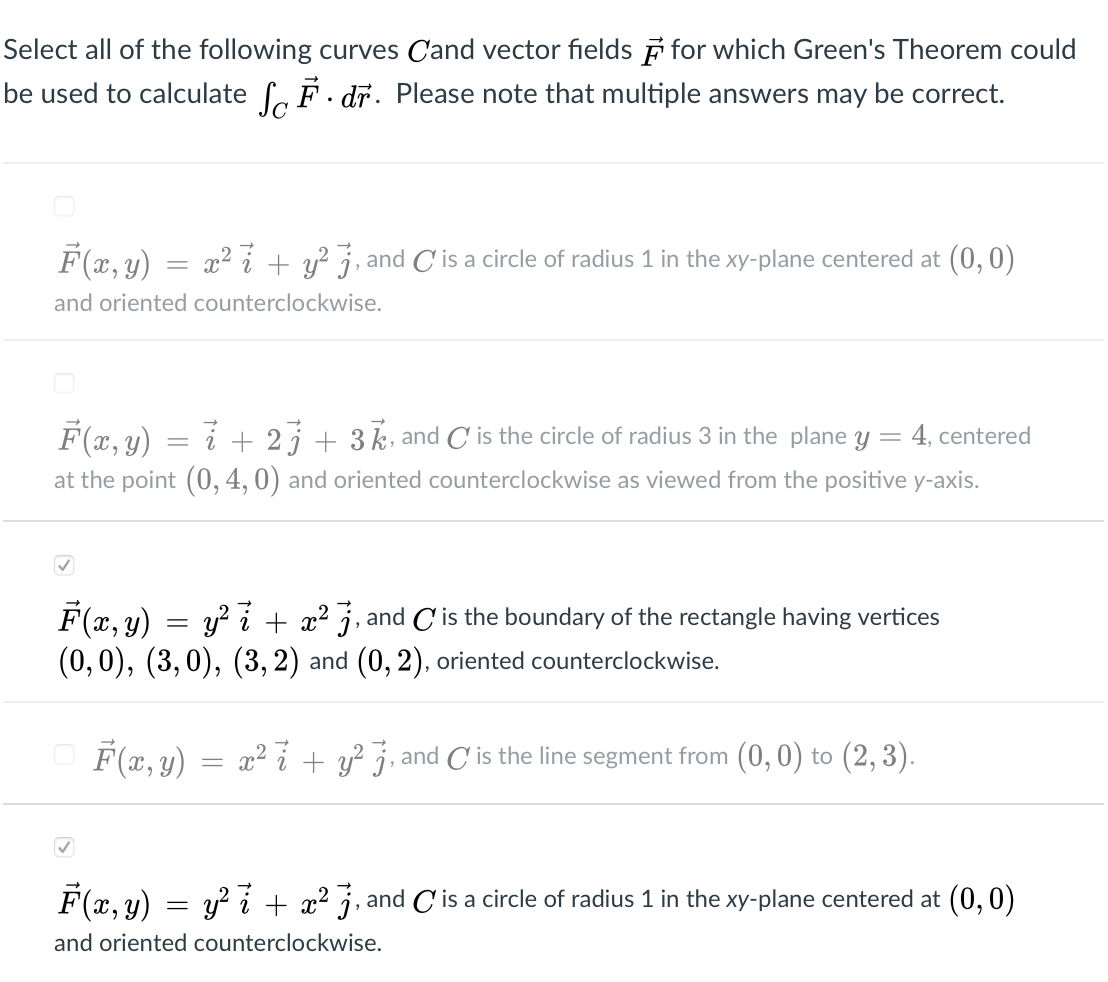Select all of the following curves Cand vector fields F for which Green's Theorem could be used to calculate , F· dr. Please note that multiple answers may be correct. F(x, y) = x² 7 + y? j, and C'is a circle of radius 1 in the xy-plane centered at (0, 0) and oriented counterclockwise. F (x, y) at the point (0, 4, 0) and oriented counterclockwise as viewed from the positive y-axis. i + 21 + 3 k, and C is the circle of radius 3 in the plane y = 4, centered F(x, y) = y? i + x² j, and C is the boundary of the rectangle having vertices (0,0), (3,0), (3, 2) and (0, 2), oriented counterclockwise. O F(x, y) = x² + y² j, and C is the line segment from (0,0) to (2, 3). F(x, y) = y? 7 + x² j, and C'is a circle of radius 1 in the xy-plane centered at (0, 0) and oriented counterclockwise.
Addition Rule of Probability
It simply refers to the likelihood of an event taking place whenever the occurrence of an event is uncertain. The probability of a single event can be calculated by dividing the number of successful trials of that event by the total number of trials.
Expected Value
When a large number of trials are performed for any random variable ‘X’, the predicted result is most likely the mean of all the outcomes for the random variable and it is known as expected value also known as expectation. The expected value, also known as the expectation, is denoted by: E(X).
Probability Distributions
Understanding probability is necessary to know the probability distributions. In statistics, probability is how the uncertainty of an event is measured. This event can be anything. The most common examples include tossing a coin, rolling a die, or choosing a card. Each of these events has multiple possibilities. Every such possibility is measured with the help of probability. To be more precise, the probability is used for calculating the occurrence of events that may or may not happen. Probability does not give sure results. Unless the probability of any event is 1, the different outcomes may or may not happen in real life, regardless of how less or how more their probability is.
Basic Probability
The simple definition of probability it is a chance of the occurrence of an event. It is defined in numerical form and the probability value is between 0 to 1. The probability value 0 indicates that there is no chance of that event occurring and the probability value 1 indicates that the event will occur. Sum of the probability value must be 1. The probability value is never a negative number. If it happens, then recheck the calculation.
The pair of options were stated to be incorrect, did I fail to include another option or simply chose the wrong pair?

The chosen pairs were correct but you failed to include the first option.
The correct answers are
(1) ,and is the circle of radius 1 in the -plane centered at and oriented counterclockwise.
(3) ,and is the boundary of the rectangle having vertices oriented counterclockwise.
(5) , and is the circle of radius 1 in the -plane centered at and oriented counterclockwise.
Green's theorem states that ,"Let be a positively oriented simple closed curve with interior region and assume that is piecewise smooth. If the vector field is defined and differentiable on then
In two dimensions ,
So in vector form, Green's theorem is written as
Green's theorem can be used only for the vector fields in two dimensions. It cannot be used for vector fields in three dimensions.
Therefore, option (2) is wrong.
Green's theorem can be used only if the curve is a simple closed curve. It cannot be used for line segment.
Therefore, option (4) is wrong.
In vector form, Green's theorem is written as
, where
First for option (1) , ,and is the circle of radius 1 in the -plane centered at and oriented counterclockwise.
Here,
Here,
and
Therefore,
Therefore option (1) is correct.
Step by step
Solved in 4 steps









